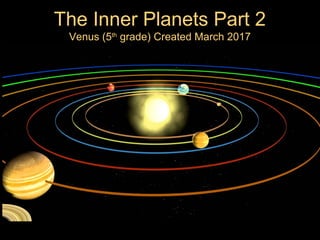The document provides an overview of Venus, the second planet from the sun, highlighting its unique characteristics such as its lengthy day compared to its year and its extreme environmental conditions caused by a dense atmosphere predominantly made of carbon dioxide. It discusses Venus's lack of moons, volcanic activity, and the outcomes of various space missions that have explored the planet, including details of the Soviet Union's early probes. Additionally, it explains the significance of Venus's nickname as Earth's 'twin planet' due to similarities in size and gravity.





















































































